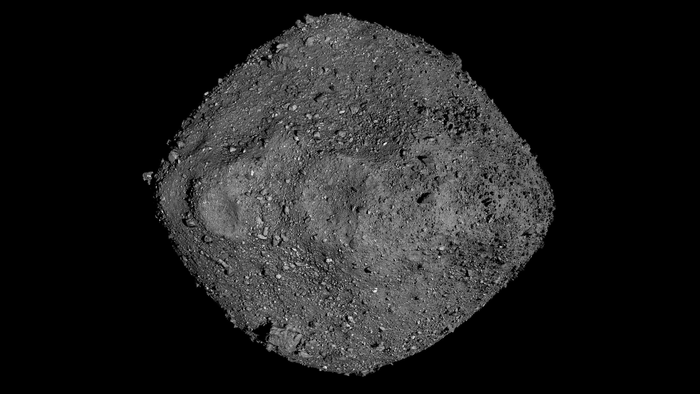The surprise lack of fine regolith became even more interesting when mission scientists observed evidence of processes capable of grinding boulders into fine regolith. Yet they had not.
Machine learning and surface temperature data to the rescue. The team concluded that Bennu's highly porous rocks are responsible for the surface's lack of fine regolith. OSIRIS-REx collected high-resolution data, down to 3 millimeters per pixel at some locations. The challenge was that the experiment had been built to collect fine regolith, basically like a beach with fine sand and pebbles. It was supposed to navigate an area on Bennu roughly the size of a 100-space parking lot but the boulders meant the safe sampling site was reduced to roughly the size of five parking spaces.

Credit: NASA/Goddard/University of Arizona
That meant a machine learning approach to separate fine regolith from rocks using thermal emission (infrared) data.
The thermal emission from fine regolith is different from that of larger rocks, because the former is controlled by the size of its particles, while the latter is controlled by rock porosity. The team first built a library of examples of thermal emissions associated with fine regolith mixed in different proportions with rocks of various porosity. Next, they used machine learning techniques to teach a computer how to "connect the dots" between the examples. Then, they used the machine learning software to analyze the thermal emission from 122 areas on the surface of Bennu observed both during the day and the night.
They found that the fine regolith was not randomly distributed on Bennu but instead was lower where rocks were more porous, which was on most of the surface. The team concluded that very little fine regolith is produced by Bennu's highly porous rocks because these rocks are compressed rather than fragmented by meteoroid impacts. Like a sponge, the voids in rocks cushion the blow from incoming meteors. Cracking caused by the heating and cooling of Bennu's rocks as the asteroid rotates through day and night proceeds more slowly in porous rocks than in denser rocks, further frustrating the production of fine regolith.





Comments